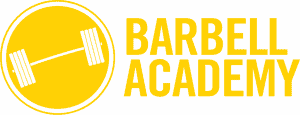The overhead squat assessment is probably the only dynamic assessment you will need. It aims to check flexibility during movement, core strength, balance and muscular control. Impairments viewed suggest variances in joint motion, muscle activation and muscle control. Overhead squat assessments help you figure out if there are any corrective flexibility and strengthening routines necessary.
To perform an overhead squat assessment you’ll need a friend or a way to record yourself. You’ll want to perform this assessment from both front and side views.
- Stand with your feet shoulder width apart and toes pointing straight ahead.
- Feet and ankles should be in a neutral position.
- For better observation perform this barefoot.
- Raise your arms over your head with elbows extended.
- Squat down to roughly the height of a chair and return to the starting position.
- Repeat 5 times from each angle.
When reviewing your movements you’ll want to look at the feet, ankles, knees, LPHC, shoulders and cervical spine.
- View the feet, ankles and knees from the front. They should remain straight and are tracking inline.
- Check to see if:
- Your feet remain flat and/or turn out.
- Your knees rotate inward.
- Check to see if:
- View the lumbo pelvic hip complex, shoulders and cervical spine from the side. They should all remain inline with the torso.
- Check to see if:
- Your lower back arches.
- Your torso leans forward too much.
- Your arms fall forward.
- Check to see if:
Record your findings and then refer to the following table for possible imbalances.
| View | Checkpoint | Compensation | Overactive | Underactive |
| Side | LPHC | Forward lean | Soleus Gastrocnemius Hip flexor complex |
Anterior tibialis
Gluteus maximus |
| Low back arches | Hip flexor complex Erector spinae Latissimus dorsi |
Gluteus maximus Hamstring complex Intrinsic core Stabilizers |
||
| Upper body | Arms fall forward | Latissimus dorsi Teres major Pecs |
Mid / lower traps Rhomboids Rotator cuff |
|
| Front | Feet | Turn out | Soleus Lateral gastrocnemius Biceps femoris |
Medial gastrocnemius Medial hamstring complex Gracilis Sartorius Popliteus |
| Knees | Move inward | Adductor complex Biceps femoris TFL Vastus lateralis |
Gluteus Vastus medialis oblique |
